#xocoatl
Text
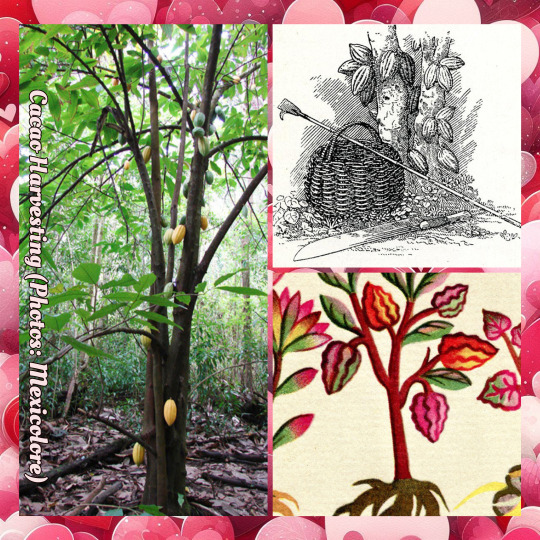

Giving chocolates is a way to show your love on Valentines Day. Human beings have been in love with chocolate and the Cacao tree (Theobroma cacao) for thousands of years, and today we will learn about the romance of culture and chocolate.
Although Cacao is most famously associated with Mesoamerican cultures, genetic studies indicate that Cacao was domesticated by indigenous Americans around 5,300 years ago in the Upper Amazon region. From there, Cacao cultivation spread north to Mexico. The Cacao fruit pulp was more commonly consumed in South America in Pre Columbian times while the Mesoamericans invented the technique of fermentation and roasting to utilise the Cacao nibs.
Archaeological evidence, such as chemical residues on ancient pottery shards, pinpoints the first use of Cacao drinks in Mesoamerica around 1600 BCE. By the time of the Classical Mayan civilization (250-900 CE), ground cacao nibs were mixed with water and spices by careful pouring between vessels to make a nourishing and invigorating hot drink which was consumed by people of all social classes. In the later Mexica (Aztec) civilization, cold cacao drink or xocoatl (bitter water in Nahuatl) exquisitely flavoured with flowers, fruits, chillies, and spices was reserved for the elite and ceremonial occasions. Cacao seeds were used as a form of currency for trade and barter during the Mexica Empire.
After the conquest of the Mexica Empire by Spain in 1521, cacao was one of the many new plant-based foods brought to Europe. In Spain, the locals of Andalusia experimented with the spicy xocoatl by adding cane sugar and dairy ingredients. It is said that drinking chocolate was so universally popular from the 17th century to the late 19th century that it prevented coffee from becoming mainstream in Spanish culture. Drinking chocolate caught on in the rest of Europe in the 1600’s but it was not until the mid 19th century that innovation in processing and chemistry allowed the invention of solid chocolate candies. Cadbury chocolate company is credited with marketing chocolates as a token of love for Valentines Day in 1868.
Chocolate in the modern world is not always a sweet story. Today, approximately 70% of the world’s cacao is produced in West African countries like Ghana and the Ivory Coast. Sadly, exploitative practices like child labour and enslavement are still rife in these countries’ Cacao farms. Chocolate lovers can help by buying Fair Trade certified chocolate products and other responsibly grown cacao products. Fortunately, cacao can be grown in sustainable agroforestry alongside native rainforest trees especially in Latin America. Cacao’s sacred and medicinal properties are experiencing a renaissance among “chocolate shamans” around the world who drawn upon indigenous knowledge to make the ethical production and mindful consumption of cacao a healing spiritual experience.
Humanity and Cacao have a long-lasting love that continues to evolve over time, and has the potential to benefit plants, people, and the planet. Ponder the storied history of Cacao if you indulge in chocolate this Valentines Day.
Image credits to Mexicolore
#katia plant scientist#botany#plant biology#plants#plant science#cacao#cacao tree#trees#economic botany#culture#cultural history#chocolate#drinking chocolate#spanish history#native american#mesoamerica#aztecs#mayans#mesoamericans#mexico#ceremonial cacao#shamans#fair trade#chocolates#food history#west africa#cacao nibs#cacao beans#aztec history#colonialism
9 notes
·
View notes
Text

My final band has a good chance to win though, I'm calling them hm... "Xocoatl Sages" so- Chocolate Sages :^
2 notes
·
View notes
Text

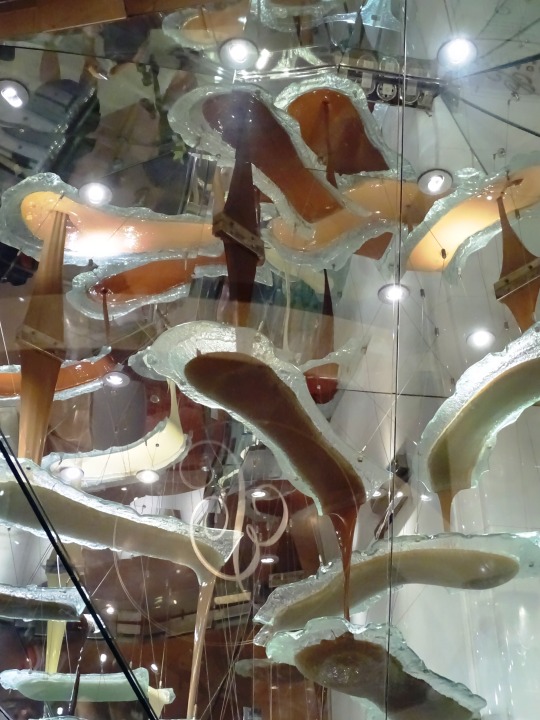
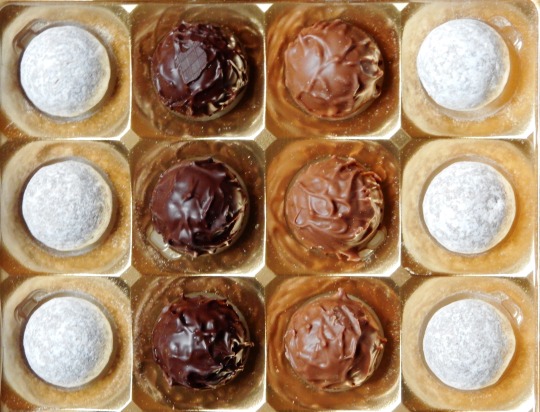

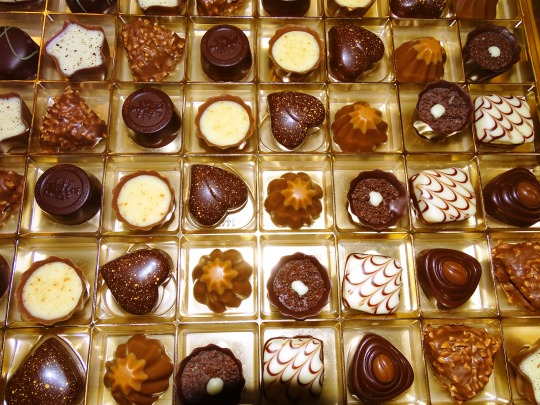




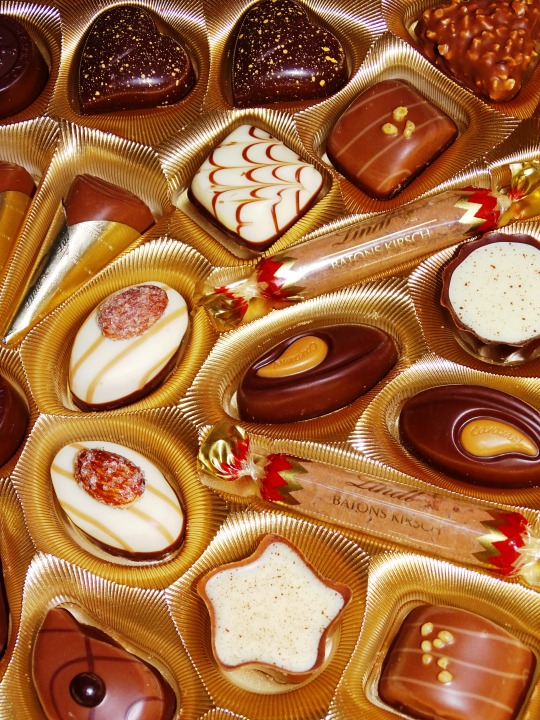


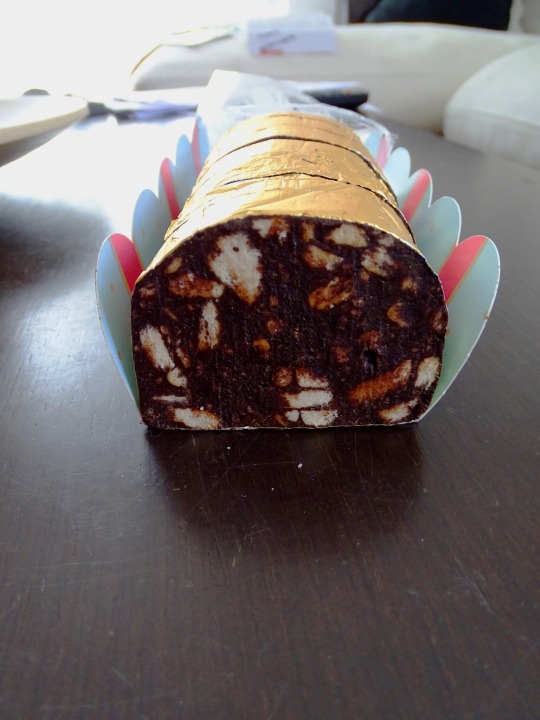
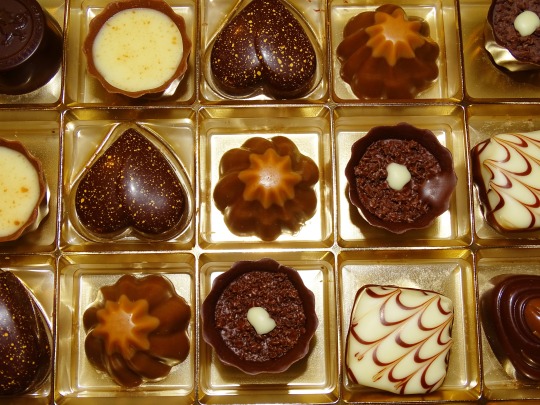


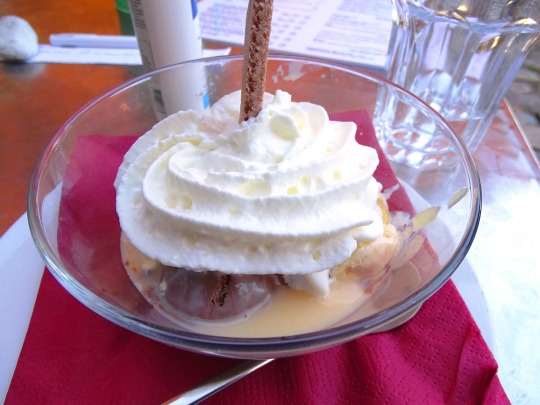
World Chocolate Day
Milk chocolate, dark chocolate, white chocolate…chocolate milk, truffles, Snickers, chocolate cake…indulge in any of the many kinds of chocolate out there.
There are a number of dates throughout the year promoting variations of local, national or international World Chocolate Day – our research leads us to believe that this is the true, definitive, purist ‘World Chocolate Day‘, so celebrate with some of the high cocoa, rich, dark chocolate that makes you go tingly inside.
World Chocolate Day is nothing short of a special tribute to mankind’s greatest culinary invention. (Sorry Bread or even Pizza!) Chocolate can enhance and help to create the most luxurious desserts and can even be enjoyed and indulged on its own. Some of the most popular chocolate bars are plain and simple. If this is the one for you, try going for a high cocoa percentage with low added sugar.
The History Of World Chocolate Day
The history of chocolate goes back around 2,500 years. The Aztecs loved their newly discovered liquid chocolate to the extent that they believed the god of wisdom, Quetzalcoatl, literally bestowed it upon them. Cocoa seeds even acted as a form of currency. Could you imagine going shopping or buying a house will a huge pile of Cocoa seeds? It would be wonderful, no? These days, the chocolate was bitter, as it was long before sugar was added. Once chocolate took a turn and went sweet in a 16th Century Europe, chocolate caught on to the masses and became one of many households favorite treats.
Many present-day chocolate companies began operations in the 19th and early 20th centuries. Cadbury began in England by 1868. And then 25 years later Milton S. Hershey, purchased chocolate processing equipment at the World’s Columbian Exposition in Chicago, he is now one of the biggest and world-known chocolate creators in the world. He began the company by producing chocolate-coated caramels. Nestlé began back in the 1860s and has grown into one of the largest food conglomerates in the world. You’re bound to of heard of one of these if not all of them. Perhaps you even enjoy a bar or two or their fine chocolate creations at home.
World Chocolate Day Timeline
Beginning of Human History
Cacao Trees (the cocoa bean plant) may have been growing in the wild for 10,000 years or more
1500 BC – 300 BC
Cacao Plants Are Grown by Olmec Indians
Olmec Indians begin growing cacao domestically in the area that is now somewhere in the vicinity of southern Mexico. The beans were probably made into an unsweetened beverage consumed by elite, wealthy people.
300 BC – 500 AD
Cacao Adopted into the Mayan Culture
Mayan culture is developed in Central America and the cacao tree becomes part of that culture. The origin of the English word “chocolate” probably began here. The word for “tree” in the Mayan language was cacahuaquchtl, and the word xocoatl, which literally means “bitter water”, was likely based on the drink made from the cacao bean.
600-1000 AD Cacao Heads to South America
Mayans migrate south and take the cacao plants with them, beginning cultivated plantations. For many people during this time, the cocoa pod was considered to be a religious symbol, sometimes referred to as ‘the food of the gods’.
1200s AD Aztecs Drink Chocolate
The Azetcs learn about cacao plants from trade negotiations with the Mayans. They continue the tradition of making a chocolate drink, sometimes mixed with herbs and spices, such as chilli.
1500s AD Cocoa Beans Head to Europe
Cocoa seeds are so precious in South American they are used as currency. Around the same time, Spanish adventurers bring chocolate back to Spain. Finding it rather bitter, they begin adding cane sugar to it, as well as vanilla and other light spices.
1657 First Chocolate House Opens
As chocolate spreads throughout Europe, a chocolate house opens in England where chocolate drinks can be purchased.
1765 First American Chocolate Company
The first chocolate company in America opens, Baker’s Chocolate.
1830 Solid Chocolate Appears
Chocolate in a solid form meant for eating is developed by British chocolate maker, J.S. Fry & Sons.
1868 First Mass Produced Chocolate
After providing chocolate for Queen Victoria, Cadbury first sells boxes of mass produced chocolate candies in England.
1875 Milk Chocolate Arrives
The Nestlé Company begins in Switzerland with the newest version of the treat, milk chocolate. Nestlé eventually becomes the largest producer of chocolate in the world.
1895 Chocolate Becomes Affordable
Milton Hershey begins selling the Hershey Bar, making chocolate affordable for the average person.
1912 Chocolate Bon-Bons are Introduced
The chocolate filled bon-bon is introduced in Switzerland by Jules Sechaud.
1986 Single-Origin Chocolate Appears
The single-origin chocolate bar is introduced by Valhrona, taking designer chocolate to a whole new level.
2000s Designer Chocolate Develops
Chocolate becomes part of the trend toward fusion cuisine, pairing up with exotic spices such as curry, saffron, lemongrass, coffee beans and much more. Many people seek chocolate with a high percentage of cacao for its antioxidant health benefits.
How Is Chocolate Made?
Many people are unaware that chocolate is a fermented food. You heard that right, once the cacao pods are picked, and then cleaned of pithy white material from the fruit, they are dried and then the cacao beans are fermented. The cacao nibs are revealed once the papery shell is removed. This is where the fun and creativity come in.
Chocolatiers then grind the nibs into cocoa mass, separating them into cocoa solids and cocoa butter, they then combine them with milk and sugar. If they’re creating white chocolate then it’s just the chocolate butter with milk and sugar. It’s definitely worth celebrating this process, especially considering how much thought goes into getting it just right. Every Chocolatier has different methods and ideas that are all popular across the world.
As time has gone on, we have moved towards the indulgence of dark chocolate. It contains far less sugar and holds a higher percentage of cocoa. If you’re looking for the best dark chocolate it’s worth checking out the ones you find from the Ivory Coast, Ghana, and Ecuador. They have ideal climates for cocoa trees and they are known for producing some of the best chocolate. It certainly sounds good! When you purchase chocolate from these regions it’s always best to make sure it’s “fair trade chocolate,” this means you are helping to help make cocoa farming more sustainable. It’s certainly something to keep in mind!
How to celebrate World Chocolate Day
Although some would love to celebrate this day every day, the chocolate day gives you the perfect opportunity to eat your favorites in ample portions. Do you really need any more of an excuse to over indulge? It’s definite harmless once in a while.
The chocolate flavor is most definitely a favorite right throughout the world. It flavors cakes, breakfast cereal, toppings, desserts, candies, ice creams, and much more. Considering its popularity, it certainly deserves a day of honor.
We don’t need to tell you what to do to celebrate this day, do we? Eat Chocolate! Some ways you can incorporate chocolate into this chocolate day include:
Breakfast: How about your favorite chocolate cereal along with a few chocolate filled donuts and wash it down with a little hot chocolate or chocolate milkshake. Or maybe chocolate chip pancakes are more to your taste?
Mid-morning snack: A chocolate candy bar with your filled with your favorite goodies. There are certainly a lot of options to choose from now!
Lunch: If you skipped on the shake fro breakfast then a big tall glass of chocolate milk is a must at lunch! Oh, and don’t forget your dessert, how about a pie of chocolate pie or cheesecake?
Mid-Afternoon: Maybe try to be a little healthier with chocolate-covered strawberries or raisins? Ok, maybe not that healthy but at least t contains fruit!
Dinner: Adults this is your time to sip on that chocolate liqueur before you sit down for dinner. You could have a chocolate flavored coffee with a piece of chocolate cake for afters.
Nighttime snack: If you’re not already chocolate out, why not opt for a few chocolate mints or biscuits with a glass of ice-cold milk?
So, Why Do We Love Chocolate So Much?
Chocolate is certainly of the world’s favorite flavors, if not the most loved taste across 7 continents. Often referred to as the magic bean, it definitely deserves to be celebrated. Everyone loves it, and the recipes that come with it are nothing less than amazing!
You don’t need to be told to indulge in this treat, as and when you want, however, the chocolate day most definitely gives us a special day to indulge in the rich, creamy glory that is chocolate. You will find many bakeries, individuals, and candy stores joining in on the celebrations and you can expect to find some delicious recipes, from meringue pies, milk chocolate pudding through to giant decorative cakes in shop windows you are sure to find something to tickle your fancy.
Why not get the cookbook out of the cupboard, scour the internet for some ideas and get yourself in the chocolate day spirit, baking and creating some wonderful chocolatey creations?
Or failing that, stock up on chocolate biscuits, ice-cream, and enjoy a day of secret treats and indulgence…
Source
#Bellagio Las Vegas - MGM Resorts#Bellagio Hotel & Casino#World Chocolate Day#7 July#travel#original photography#tourist attraction#Chocolate Peanut Butter Cup a la Mode#Swiss chocolate is the best#I only eat Swiss chocolate#Lindt PRALINÉS DU CONFISEUR#Lindt TRUFFES#Lindt CONNAISSEURS#Chocolat Frey#InternationalChocolateDay#Chocolate Banana Milkshake#Chocolate Salami#Spain#Germany#Switzerland#ice cream#truffles#WorldChocolateDay
3 notes
·
View notes
Note
ok but. chocolate soup. whether as a dessert, or as a savoury throwback to classic xocoatl. what are your thoughts on this
Hm. That sounds acceptable, yes. Although I don't know how a chocolate soup- at least, as a dessert- would work, aside from just being melted chocolate.
2 notes
·
View notes
Text
Multiverse OC: Agnes Helvig
Agnes Helvig
Names: Real name is hidden away/[REDACTED], Agnes Glöckner (disliked), Agnes Helvig
Aliases: Xochitlicue (El Dorado), Sybella (Mesopotamian), Omarosa (Babylon), Dwura (Assyria), Onatah (Akkadian), Devorah (Old Hebrew), Wadjet (Ancient Egyptian), Hecate/Hekate (Greek), Trivia (Roman), Sassa (Old Norse), Gabija (Baltic), Avia Trivia (Sol Fertilis)
Titles: Mother of Witches and Warlocks, Giver of Magic, Goddess of Witchcraft, Ghost Goddess, Woman in the Crossroads, The One Who Can Not Be Judged, The One Who Protects, The White-Haired Seer, The Woman with Golden Eyes, Serpent Goddess, The First Witch, The Woman Who Wants to Be Forgotten, The Uncanny Crone (by the Church of Blood), The Mysterious Benefactress, The Fiery Maiden, The Ancient Virgin (can no longer use), The Creature that Won’t Die, Grandmother of the Ayran Race (disliked), Reborn Queen of the Great Earth, Stingy Bitch (by John Constantine)
Age: 100,000+ (Chronologically), Mid-20s (Physically)
Gender: Female
Height: 5’8” (173 cm)
Birthday: Unknown
Race: Half-Cosmic/Underworld Goddess and Half-Demon Goddess
Residence: El Dorado (partially, currently), Semi-nomadic, Buto, Egypt (formerly), Selinunte, Sicily, Italy (formerly), Viking era Denmark (formerly), Lithuanian countryside (formerly), Kutha (birthplace)
Relatives: Ereshkigal (Biological mother, deceased), Nergal (Biological father, estranged), Inanna (maternal aunt), Nergina Fritz (Half-sister), Aunt Sis Fritz (Step-mother), Nyx (adoptive mother), Nyx’s children [Aether, Hemera, Moros, Dolos, Thanatos, Hypnos, Oneiroi, Momus, Oizys, Charon, the Hesperides, The Fates [Clotho, Lachesis, and Atropos], Nemesis, The Keres, Apate, Philotes, Geras, Eris, Amitola/Lucinda] (adoptive siblings), Twilight (adoptive niece by Amitola/Lucinda), Dr. Sigmund Glockner (Ex-husband, former captor), Xocoatl (Current Husband), Sehkmet, Bastet, Hathor, and Maat (foster sisters), Circe (adoptive daughter), Medea (adoptive daughter; disowned) Medea’s sons (adoptive grandchildren, deceased), Diedrich Glöckner (biological son, with Glockner), Malaea Koi (Granddaughter), The Cuckoos (Genetic Grandchildren), Tochtli (biological daughter, with Xocoatl)
Occupation: Goddess of Magic, Ghosts, Crossroads, the Moon, Travel, Mysteries, Hidden Passages, Fertility, Rebirth, and Gold (currently), Experiment (formerly), Goddess of Protection and Reunification (Egyptian, formerly), Goddess of Magic, Crossroads, and Ghosts (Greek/Roman, formerly), Virgin Goddess of Fire, Home, and Family (Baltic, formerly), Seer (Nordic, formerly)
Likes: Her Family, Xocoatl, Nyx, Offerings, Order, Rabbits, Gold, Reading new books, Modern Technology, Medicine, Kleicha, Chocolate, Tea, Traveling, The Underworld, Playing the Lyre, Animals, Dancing
Dislikes: SIGMUND GLOCKER, National Unity Party, Witch Trials, Anyone who disrespects her, Mad Scientists, Being Trapped, Church of Blood, Grave Robbers, Gods’ Arrogance, Demons, Angels, John Constantine’s Antics, Forbidden Arts
Appearance: Often, Agnes is seen with waist-length golden hair and cyan eyes. Her skin appears silvery with a holographic shimmer. It is impossible to determine which race or ethnicity she is. Her eyes would glow golden whenever she used her magic. She has several surgical scars around her torso and upper legs from years of being the “wife” and test subject of Glockner. Those scars could not fade away regardless of what Agnes did. Sometimes, her eye colors vary from purple to red to green. She would have different hairstyles depending on the occasion.
Causal: Agnes currently wears a blue-purple sun dress with golden embroidery of the sun and moon. She also wears a pair of black sandals. Other times, she wears a purple short-sleeved blouse with dark blue high-rise jeans and a pair of black boots.
Young: As a child, Agnes would wear a black tunic with silver accents, given to her by Nyx.
El Dorado: While staying with Xocoatl in El Dorado, she wears a white tunic with blue and violet accents and a white skirt/loincloth. She also wears turquoise earrings, a pair of golden arm bands, gold bangles, a gold and turquoise necklace, and two gold rings on her left hand.
Mesopotamian: As Sybella, she wears a white tunic dress with a violet shawl around her. She would have a pair of gold earrings and a necklace.
Egyptian: As Wadjet, she wears a green regal sheath dress with a scale design and a red robe with feathers and hieroglyphic patterns depicting guardianship. She also has a royal blue blindfold that covers her eyes in a crisscrossed way. Her wings resemble a falcon’s and she has what seems like closed eyelids. Her jewelry consists of a golden collar, ornate bracelets, a pair of serpent anklets, and a golden crown that has the uraeus with the Sun on the center.
Hebrew: As Devorah, she wears a long blue tunic with a violet cloak. She also wears a white mitpaḥat, a pair of silver earrings, and wool sandals.
Greco-Roman: As Hecate, Agnes wore black undergarments with a purple cloak. It is attached together with silver ornaments. She is always barefoot. Her physical appearance was greatly altered during this time. She had three faces and six arms. Two of them held a torch in each hand as one held keys and another held a dagger. Behind her head, there is a strophalos.
Baltic: As Gabija, Agnes wore a traditional red Baltic dress with a white shirt and a pair of black shoes. Her necklace is silver and her dress has a fiery movement. Her necklace is actually a grass snake that wraps itself on her neck.
Nordic: As Sassa, Agnes wore a blue hangerok with yellow and white ornaments around it. She also wore a pair of brown leather boots. She often wears a shawl during the harsh winter. During this time, her hair was very long. This allows her to fuse her hair to the floor and the walls of her private longhouse to see the legends of the Nordic Gods without directly interacting with them.
Sol Fertilis: In Sol Fertilis, she dressed as a Gamma Plus. Her clothes are a purple bodice with a tiered skirt, a pair of purple heels, a purple mantilla, and a purple wedding ring. She also wears a golden necklace with an amethyst and a pair of golden earrings. The clothes are from Ivoire, which is a luxury clothing brand. Her hair is braided in a Minoan style and covered in pearls.
Pre-capture: In 1920s Norway, Agnes wears a long, simple white dress with a girdle of vines and flowers. Her hair is braided with lilies of the valley and leaves with a wreath of white water lilies. She is often mistaken as a Skogsrå.
Capture: After being captured, Agnes was forced to wear “Ostanized” conservative clothes. Usually, she had to wear a teal dress with black stockings and black low heels. Her physical appearance deteriorated heavily during this time. Her hair had become stringy, her eyes become glassy, her skin had begun to crack and pale, and appeared malnourished.
Tomb: After her false death, Agnes wore a royal blue court dress made of satin, adorned with golden embroidery. The bodice is fitted with a voluminous skirt, complemented by a matching dress. A mantua in the same hue and adorned with golden embroidery drapes over the gown. She also has black dress shoes that also have gold embroidery. Glockner had her wrapped in Germanic and Old Zandian runes to make sure that she would not be able to move. After years underground, the dress looks tattered.
[REDACTED]: In a certain form, her hair becomes white, while it is burning hot, as her eyes become completely black in the shade where light can not be reflected. It looks like black tears come out of her eyes. The ends of her mouth extend to her ears and fangs form on it. The scars around her torso form to become mouths and have sharp teeth there as well. A pair of falcon wings appear on her back as eyes appear on them. She gains four pairs of horns. Her feet turn into falcon talons. Agnes wears a long purple Mesopotamian dress, which exposes her stomach and legs, and a black shawl. The edges of her shawl have golden linings and onyx. Her nails become black and sharp as if there is poison coming from them. For jewelry, she has a golden necklace with a pendant that has her personal sigil, a pair of obsidian earrings, three golden armcuffs, and a gold bracelet with runes. Finally, she wears a gold crown with the symbols of the moon, including crescents and a full moon, with stars made of obsidian and a long gold chain mail covering the upper portion of her hair.
Personality: Agnes is an aloof, studious, and quiet woman who has years of knowledge and experience. She has shown to others that she is hands-off, considering she rarely, if ever, interferes with the affairs of mortals and it is not uncommon for her to ignore calls for her. This is not the case with her close friends and family. Agnes takes her long-standing position as the Goddess of Magic very seriously as she is why magic exists among mortals. She refuses to interfere or get involved with mortals’ affairs unless it is necessary, such as dealing with inter-dimensional beings, including demons, mortals tampering with the natural order, unauthorized resurrection, and dangerous warping of reality, among others. She is often annoyed at being worshiped since she wants to remain hidden, especially since the 20th century. At the same time, she does not prevent it. Agnes deeply loves Diedrich, despite him being the result of the brutality from Glockner, and deeply regrets not being there in his life. She also wants to be a caring grandmother to the Cuckoos. She is rather cautious towards angels and demons since they are naturally opposed to her. Despite her cautiousness about demons, she is willing to help cambions. She has severe distrust towards any scientist due to the trauma and torture she endured under Glockner. She particularly hates scientists who use their technology to abuse others and is willing to either kill or maim them for that. Agnes is very interested in modern technology as she tends to infuse her magic with her cell phone, TV, laptop, wifi router, etc. Since marrying Xocoatl, she has become happier and more open as she is taking steps to recover from the trauma. She is highly distrustful towards Nergal and does not believe he is capable of changing. However, she cares deeply about Nergina and Aunt Sis, being concerned about their well-being.
#agnes helvig#multiverse oc#multiverse#DC AU#Grimm Adventures of Billie & Manny AU#Grimm Adventures of Billie & Manny#Spy X Family AU#FOP AU#TND AU#Courage the Cowardly Girl AU#Danni Phantom AU#Hazbin Hotel AU#Gravity Falls AU#Sol Fertilis#AAnA AU
1 note
·
View note
Text
No one was present who disliked chocolate. Everyone adores it.
People of all ages enjoy chocolate.
In simple words, chocolate is a sweet, typically brown confection derived from cacao seeds that is frequently used as a flavouring for desserts, beverages, etc.: a chocolate bar. White, dark, and milk chocolate.
The word "chocolate" is derived from the Aztec word "xocoatl," and Theobroma cacao, the scientific name of the cacao plant, means "food of the gods." But Mesoamerican societies used the cacao bean to make bitter beverages before chocolate became the delicious global sensation we know it to be today.
We give delicious and scrumptious chocolates for our customers' special days and happy anniversaries in their lives.
Furthermore, we've been delivering high-quality chocolates for years and we're still going well.
To make our customers happy and assist them to celebrate their happy moments, we provide the finest online delivery.
Types
There are four types of chocolates we have.
They are,
White chocolate
Dark chocolate
Ruby chocolate
Milk chocolate
White chocolate can be easily distinguished thanks to its cream or ivory hue. Lecithin, an emulsifier that facilitates the blending of the ingredients, is added to sugar, cocoa butter, milk, vanilla, and other ingredients to create it. The pleasant vanilla scent of white chocolate is derived from these components. The flavor profile of white chocolate is frequently described as being mostly sweet with strong undertones of sweetened condensed milk and vanilla.
We all have fond memories of milk chocolate from our youth. The most common form of chocolate is generally described as milk chocolate due to its light brown hue, creamy texture, and sweet flavour. It is created by blending milk, sugar, and chocolate liquor (cocoa solids and cocoa butter).
The second most popular kind of chocolate is dark chocolate, which stands out for its distinctive deep brown hue. It is notably less sweet than milk chocolate and is also referred to as black or semisweet chocolate. Due to the numerous articles that have been written about the health advantages of dark chocolate, its appeal has increased recently.
The Belgian chocolate producer Callebaut first introduced the category of "Ruby chocolate" in 2017. Its name derives from the reddish-pink color of the hair. Ruby chocolate has a tangy and sweet flavour. In terms of texture and richness, it is a lot like white chocolate. Contrary to white chocolate, it has a fruity, slightly acidic flavour.
We are here in the aim of delivering delectable chocolates to the region and bringing joy to our customers.
Our services
Online order
Fast delivery
Box packaging chocolates
Home delivery
Printing chocolates
We provide the best chocolate in Pathanamthitta. We produce amazing chocolate and only utilise the best ingredients. Our success depends on keeping clients happy.
0 notes
Text
World Chocolate Day- New Adventures of Theobroma.
The Theobroma connect Harry Potter, Honey and Tea.
Its September 13th once again. The world chocolate day. for couple of years now I have been writing about it in 2020 as celebrating the Theobroma.
In 2016 it was an ode to the Xocoatl.
This time round, I thought let me do away with history, folk lore and see what comes across with my favourite addiction that is reading.
The harry potter…

View On WordPress
0 notes
Text
More than 4,000 years ago, cocoa, the ingredient in chocolate, was found in the depths of the Amazon. Since then, chocolate has gained a lot of popularity.As early as the sixth century AD, the Maya cultures understood the allure of chocolate, which is made from the seeds of the cocoa tree. The cocoa pods were known by the Maya names Cacahuaquchtl, which means "tree," and Xocoatl, which means "bitter water," and symbolised life and fertility. Their temples and palaces had elaborate sculptures of priceless pods that demonstrated the significance of cocoa in their way of life.
0 notes
Text
I'm getting tired of listening to people cry about cultural appropriation.
Anyone complaining about cultural appropriation who isn't South American, specifically Olmec, in descent, should be required to give up chocolate in all its forms.
The reason being that the cocoa bean, an essential ingredient in the creation of chocolate, originates from South America, specifically the Amazon Rainforest.
The Olmec because they were the first to turn cocoa beans into chocolate. Or "xocoatl."
While the first sweetened form of chocolate was made in 1847 in Britain by a company named J.S. Fry & Sons, that would only extend the allowance to those of British descent & they would be barred from "Mexican Chocolate" while South Americans & all other people who aren't British in ancestry, would be barred from sweetened chocolate.
Actually... sweetened chocolate would be outlawed due to sugar cane having originated from Malaysia, specifically, New Guinae.
Now, there are probably a number of people who would be totally fine with this as they never liked chocolate to begin with, but I'm willing to bet that a majority of people would be VERY upset with having to give up chocolate.
0 notes
Photo

Xocoatl (eau de parfum)
Linneo
Fueguia 1833
Amber
The Aztecs used an orchid, the vanilla, to enrich a very thick drink made from cacao, for the nobles and warriors known as the xocoatl.
Top notes: Vanilla
Heart notes: Cacao
Base notes: Rum
0 notes
Text
Nahuatlismos
Itacate – Itacatl, los hombres salían de la casa con su itacatl (colación o alimentos) para la comida del medio día.
Totopo – Tlaxcaltotopochtli (tortillas fritas comidas en las campañas militares).
Petaca – Petlacalli, lugares para guardar que se trataban de cajas de cañas y cuero.
Petate – esta palabra viene de Petatl que ricos y pobres lo usaban para dormir. De hecho la palabra petateo viene de la tradición prehispánica y colonial de envolver al difunto con un petate.
Guajolote – Uexolotl, macho de esta especie de ave que era fuente básica de proteínas para los mexicas).
Mole – del náhuatl Molli, una salsa de chile y especias espesada con masa de maiz, aunque también se dice que originalmente hacia referencia a cualquier salsa.
Achichintle – viene de Aachtli que significa: criado, paje o servidor de alguien.
Jacal – del nahautl Xacalli, choza con techumbre redonda, pajiza.
Tamal – Tamalli quiere decir envuelto. Este platillo que existe desde el 100 aC se preparaba con carne de guajolote.
Aguacate – de Ahuacatl en náhuatl, quiere decir testículo por la forma y textura de la fruta.
Chocolate – Xocoatl, bebida de tiempos prehispánicos, viene de Xococ, amargo y Atl, agua. Se obtiene de la mezcla del azúcar con la masa y la manteca del cacao.
Tejocote – del nahuatl Xocotl fruta y Tetl piedra «Fruta dura como piedra».
Chicle – Tzictli es el origen náhuatl de la palabra y proviene de la goma del árbol de zapote.
Chamagoso – viene de Chamactic que deriva de chiamahuilia que significa ungido con aceite de chía.
Huitlacoche – Cuitalcoche significa en náhuatl excrecencia. Cuitlatl que dormita Cochi dormir.
Pozole – Tlapozonalli que significa espumoso o hervido.
Tlapalería – viene del náhuatl Tlapalli que significa color. Dicha palabra viene del verbo Tlapaloa que significa colorear. Esto porque en dichos lugares se vendían las pinturas de colores entre muchas otras cosas como clavos, herramientas etc.
Cacahuate – su nombre original era Tlalcacahuatl y significa «cacao de la tierra». Tlalli, tierra y Cacahuatl, cacao que deriva del verbo cohua (comprar). Recordemos que el cacao se usaba como moneda.
Escamoles – Azcamolli, la palabra viene del nahuatl Azcatl hormiga y Molli, guiso, salsa, mole. Era el caviar prehispánico, un platillo hecho a base de las larvas de la hormiga guijera.
Chapulín – significa «el que rebota como pelota de hule». Chapania, rebotar y Olli que significa hule.
Epazote – Epazotl, se deriva de Epatl, hedor o zorrillo y zotl que significa sudor. Era llamada la planta zorrillo en el pasado por el fuerte olor que despide.
Chamaco – Chamahuac signfica rollizo, grueso. Ahora se les dice así a los niños traviesos. Escuincle viene de la palabra perro, itzcuintli.
Chichi – del nahuatl Chichihuali era el paraíso al cual iban los niños muertos para alimentarse de un árbol de senos se llamaba Chichihuacuauhco.
Chipi chipi para decir que esta está lloviendo ligeramente, Xipini quiere decir gotear y de Xixipini, llovizna.
Apapacho – tiene su origen en el náhuatl Papatzoa que significa apretar o abrazar.
Chilaquil – viene del nahuatl Chilli, chile y Aquili, del verbo aquia que significa “estar metido”. Por lo tanto significaría “metidos en chile”.
Ajolote viene del náhuatl atl agua y xolotl monstruo haciendo alusión al hermano gemelo de Quetzalcoatl.
Tianguis – del náhuatl Tianquiztli, antes de la llegada europea se realizaba cada cinco días la jornada de Mercado por lo que se llamaba Macuil tianquiztli. Esto fue modificado por los frailes para evitar que el día de mercado cayera en los domingos..
Tequila – Tequitl que significa trabajo y de Tlan, lugar. Tequitlan, hace alusión a las labores agrícolas que realizaban los indígenas para pagar su tributo a través del trabajo.
Titipuchal – Tliltic que significa color negro o azabache y de Potzalli “montón de tierra “. Originalmente se diría Tliltipotzalli. Se usa como sinónimo de “muchas cosas, muchedumbre”
Paliacate – viene de una mezcla del náhuatl y el español, de para y yacatl o sea nariz.
Huauzontle – proviene del náhuatl Huauhtzontli, Huauhtli que significa bledo (amaranto) y tzontli que significa cabellera o cabello. Por lo tanto significaría “cabellera de amaranto”.
Chipotles – del náhuatl Pochtli que significa ahumado y Chilli que significa chile. En tiempos de lo mexicas se le llamaba Pochchilli.
Esquite – del náhuatl Izquitl, que significa botana de maíz.
Comal – Comalli, se refiere al objeto donde se cuecen las tortillas de maíz.
Jícara – Xicalli, significa vaso elaborado de la calabaza. Hoy en día estas jícaras se utilizan para tomar bebidas tradicionales como el pozol o el tejate.
Wey – del náhuatl Huey, que varía en significados entre ellos grande, gran, venerado, honorable, y que los españoles equipararon a “buey”. Al máximo gobernante de Tenochtitlán se le nombraba Huey Tlatoani.
Mezcal – Mexcalli, palabra compuesta por Metl (maguey) y Xcalli (cocido).
Popote – Popotli, se refiere al tallo seco y hueco de las gramíneas, que crecían con abundancia alrededor de la Gran Tenochtitlán.
Tomate – Tomatl, que significa agua gorda.
Papalote – Papalotl que significa mariposa.
Mitote – proviene del nahuatl Mitoti, que significa bailarín. Asimismo era el nombre de una danza ritual mexica.
Guacamole – Ahuacamolli formado por Ahuacatl (aguacate), y Mulli (salsa).
Elote – Elotl, que significa mazorca tierna de maíz.
0 notes
Photo
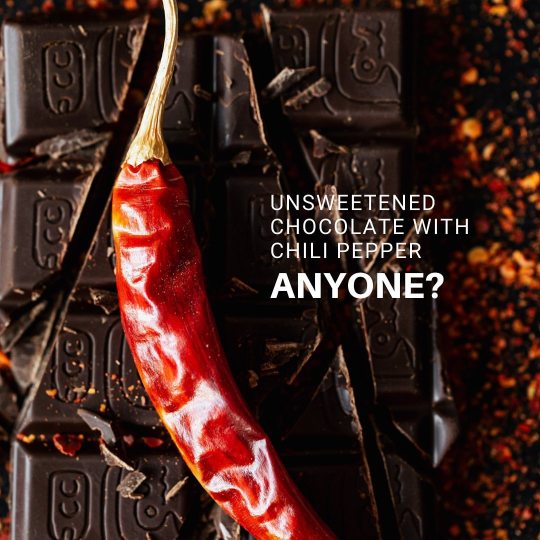
Thirsty Thursday Did you know that the ancient Mayans ground chocolate with chile peppers and served it as a drink? Head to Mexico and try some “Xocoatl” (Mayan for “chocolate”)! #mexicanchocolate #ancientdrinks #mexico #mayan #xocoatl #purplepassiontravel https://www.instagram.com/p/CK4VUEnjfob/?igshid=i2bic2y1g5ea
0 notes
Photo


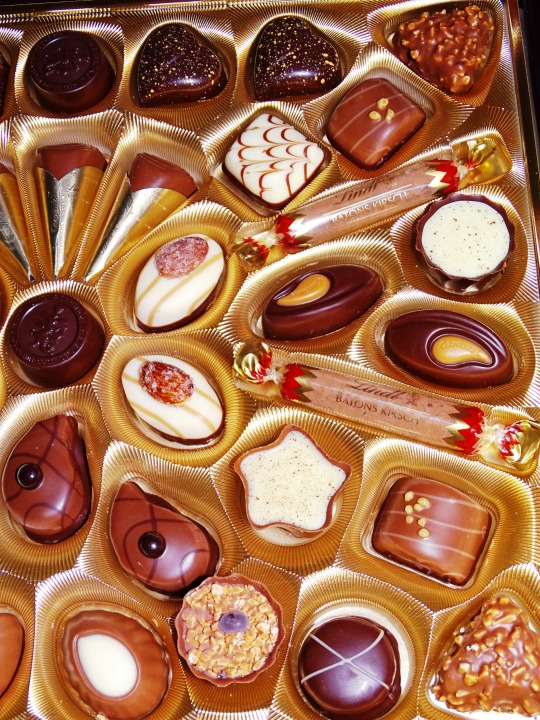
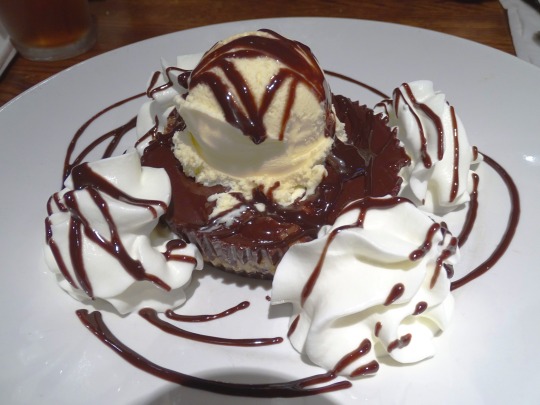


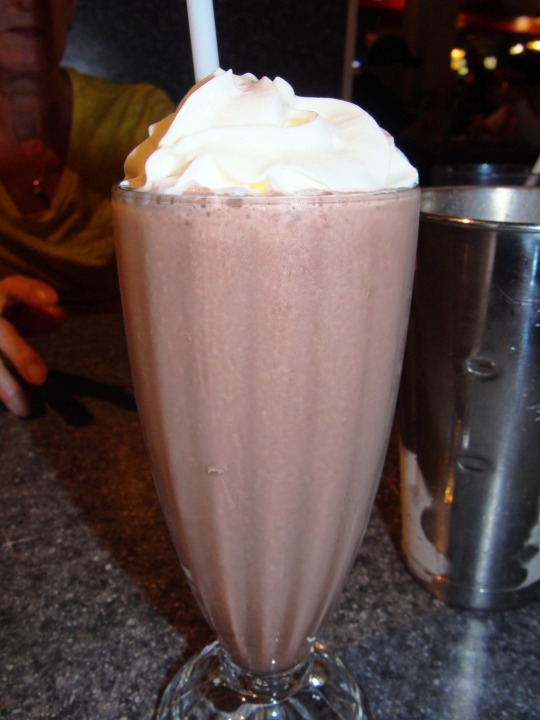
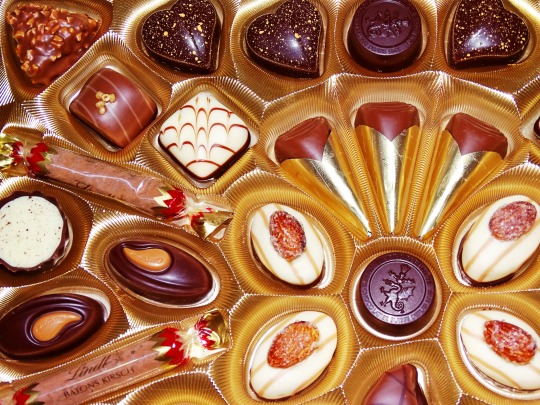

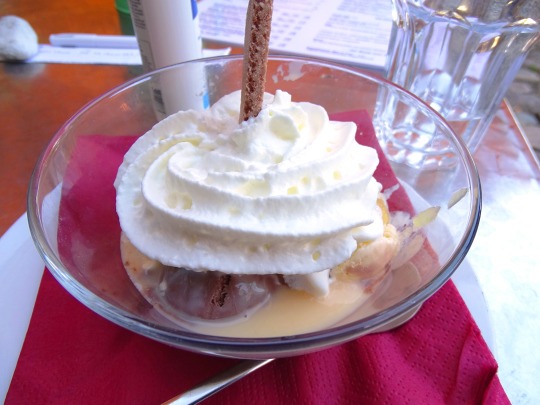
World Chocolate Day
Milk chocolate, dark chocolate, white chocolate…chocolate milk, truffles, Snickers, chocolate cake…indulge in any of the many kinds of chocolate out there.
There are a number of dates throughout the year promoting variations of local, national or international World Chocolate Day – our research leads us to believe that this is the true, definitive, purist ‘World Chocolate Day‘, so celebrate with some of the high cocoa, rich, dark chocolate that makes you go tingly inside.
World Chocolate Day is nothing short of a special tribute to mankind’s greatest culinary invention. (Sorry Bread or even Pizza!) Chocolate can enhance and help to create the most luxurious desserts and can even be enjoyed and indulged on its own. Some of the most popular chocolate bars are plain and simple. If this is the one for you, try going for a high cocoa percentage with low added sugar.
The History Of World Chocolate Day
The history of chocolate goes back around 2,500 years. The Aztecs loved their newly discovered liquid chocolate to the extent that they believed the god of wisdom, Quetzalcoatl, literally bestowed it upon them. Cocoa seeds even acted as a form of currency. Could you imagine going shopping or buying a house will a huge pile of Cocoa seeds? It would be wonderful, no? These days, the chocolate was bitter, as it was long before sugar was added. Once chocolate took a turn and went sweet in a 16th Century Europe, chocolate caught on to the masses and became one of many households favorite treats.
Many present-day chocolate companies began operations in the 19th and early 20th centuries. Cadbury began in England by 1868. And then 25 years later Milton S. Hershey, purchased chocolate processing equipment at the World’s Columbian Exposition in Chicago, he is now one of the biggest and world-known chocolate creators in the world. He began the company by producing chocolate-coated caramels. Nestlé began back in the 1860s and has grown into one of the largest food conglomerates in the world. You’re bound to of heard of one of these if not all of them. Perhaps you even enjoy a bar or two or their fine chocolate creations at home.
World Chocolate Day Timeline
Beginning of Human History
Cacao Trees (the cocoa bean plant) may have been growing in the wild for 10,000 years or more
1500 BC – 300 BC
Cacao Plants Are Grown by Olmec Indians
Olmec Indians begin growing cacao domestically in the area that is now somewhere in the vicinity of southern Mexico. The beans were probably made into an unsweetened beverage consumed by elite, wealthy people.
300 BC – 500 AD
Cacao Adopted into the Mayan Culture
Mayan culture is developed in Central America and the cacao tree becomes part of that culture. The origin of the English word “chocolate” probably began here. The word for “tree” in the Mayan language was cacahuaquchtl, and the word xocoatl, which literally means “bitter water”, was likely based on the drink made from the cacao bean.
600-1000 AD Cacao Heads to South America
Mayans migrate south and take the cacao plants with them, beginning cultivated plantations. For many people during this time, the cocoa pod was considered to be a religious symbol, sometimes referred to as ‘the food of the gods’.
1200s AD Aztecs Drink Chocolate
The Azetcs learn about cacao plants from trade negotiations with the Mayans. They continue the tradition of making a chocolate drink, sometimes mixed with herbs and spices, such as chilli.
1500s AD Cocoa Beans Head to Europe
Cocoa seeds are so precious in South American they are used as currency. Around the same time, Spanish adventurers bring chocolate back to Spain. Finding it rather bitter, they begin adding cane sugar to it, as well as vanilla and other light spices.
1657 First Chocolate House Opens
As chocolate spreads throughout Europe, a chocolate house opens in England where chocolate drinks can be purchased.
1765 First American Chocolate Company
The first chocolate company in America opens, Baker’s Chocolate.
1830 Solid Chocolate Appears
Chocolate in a solid form meant for eating is developed by British chocolate maker, J.S. Fry & Sons.
1868 First Mass Produced Chocolate
After providing chocolate for Queen Victoria, Cadbury first sells boxes of mass produced chocolate candies in England.
1875 Milk Chocolate Arrives
The Nestlé Company begins in Switzerland with the newest version of the treat, milk chocolate. Nestlé eventually becomes the largest producer of chocolate in the world.
1895 Chocolate Becomes Affordable
Milton Hershey begins selling the Hershey Bar, making chocolate affordable for the average person.
1912 Chocolate Bon-Bons are Introduced
The chocolate filled bon-bon is introduced in Switzerland by Jules Sechaud.
1986 Single-Origin Chocolate Appears
The single-origin chocolate bar is introduced by Valhrona, taking designer chocolate to a whole new level.
2000s Designer Chocolate Develops
Chocolate becomes part of the trend toward fusion cuisine, pairing up with exotic spices such as curry, saffron, lemongrass, coffee beans and much more. Many people seek chocolate with a high percentage of cacao for its antioxidant health benefits.
How Is Chocolate Made?
Many people are unaware that chocolate is a fermented food. You heard that right, once the cacao pods are picked, and then cleaned of pithy white material from the fruit, they are dried and then the cacao beans are fermented. The cacao nibs are revealed once the papery shell is removed. This is where the fun and creativity come in.
Chocolatiers then grind the nibs into cocoa mass, separating them into cocoa solids and cocoa butter, they then combine them with milk and sugar. If they’re creating white chocolate then it’s just the chocolate butter with milk and sugar. It’s definitely worth celebrating this process, especially considering how much thought goes into getting it just right. Every Chocolatier has different methods and ideas that are all popular across the world.
As time has gone on, we have moved towards the indulgence of dark chocolate. It contains far less sugar and holds a higher percentage of cocoa. If you’re looking for the best dark chocolate it’s worth checking out the ones you find from the Ivory Coast, Ghana, and Ecuador. They have ideal climates for cocoa trees and they are known for producing some of the best chocolate. It certainly sounds good! When you purchase chocolate from these regions it’s always best to make sure it’s “fair trade chocolate,” this means you are helping to help make cocoa farming more sustainable. It’s certainly something to keep in mind!
How to celebrate World Chocolate Day
Although some would love to celebrate this day every day, the chocolate day gives you the perfect opportunity to eat your favorites in ample portions. Do you really need any more of an excuse to over indulge? It’s definite harmless once in a while.
The chocolate flavor is most definitely a favorite right throughout the world. It flavors cakes, breakfast cereal, toppings, desserts, candies, ice creams, and much more. Considering its popularity, it certainly deserves a day of honor.
We don’t need to tell you what to do to celebrate this day, do we? Eat Chocolate! Some ways you can incorporate chocolate into this chocolate day include:
Breakfast: How about your favorite chocolate cereal along with a few chocolate filled donuts and wash it down with a little hot chocolate or chocolate milkshake. Or maybe chocolate chip pancakes are more to your taste?
Mid-morning snack: A chocolate candy bar with your filled with your favorite goodies. There are certainly a lot of options to choose from now!
Lunch: If you skipped on the shake fro breakfast then a big tall glass of chocolate milk is a must at lunch! Oh, and don’t forget your dessert, how about a pie of chocolate pie or cheesecake?
Mid-Afternoon: Maybe try to be a little healthier with chocolate-covered strawberries or raisins? Ok, maybe not that healthy but at least t contains fruit!
Dinner: Adults this is your time to sip on that chocolate liqueur before you sit down for dinner. You could have a chocolate flavored coffee with a piece of chocolate cake for afters.
Nighttime snack: If you’re not already chocolate out, why not opt for a few chocolate mints or biscuits with a glass of ice-cold milk?
So, Why Do We Love Chocolate So Much?
Chocolate is certainly of the world’s favorite flavors, if not the most loved taste across 7 continents. Often referred to as the magic bean, it definitely deserves to be celebrated. Everyone loves it, and the recipes that come with it are nothing less than amazing!
You don’t need to be told to indulge in this treat, as and when you want, however, the chocolate day most definitely gives us a special day to indulge in the rich, creamy glory that is chocolate. You will find many bakeries, individuals, and candy stores joining in on the celebrations and you can expect to find some delicious recipes, from meringue pies, milk chocolate pudding through to giant decorative cakes in shop windows you are sure to find something to tickle your fancy.
Why not get the cookbook out of the cupboard, scour the internet for some ideas and get yourself in the chocolate day spirit, baking and creating some wonderful chocolatey creations?
Or failing that, stock up on chocolate biscuits, ice-cream, and enjoy a day of secret treats and indulgence…
Source
#Chocolate Peanut Butter Cup a la Mode#Chocolate Banana Milkshake#USA#Schweden Becher#Swiss chocolate is the best#Lindt & Sprüngli#Lindt#Chocolat Frey#Lindt CONNAISSEURS#Lindt TRUFFES#original photography#dessert#restaurant#Germany#Lindt PRALINÉS DU CONFISEUR#I only eat Swiss chocolate#World Chocolate Day#WorldChocolateDay#InternationalChocolateDay#7 July#food#snack#ice cream
0 notes
Photo
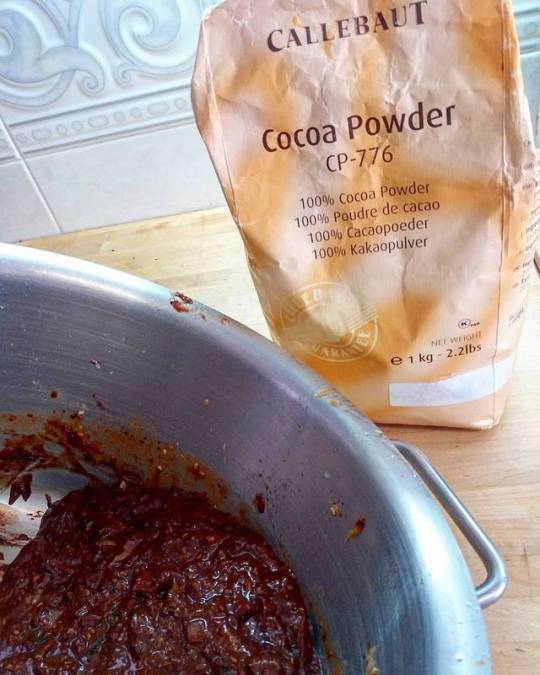
Mole Poblano. #tacostopbyjoebest #umchefMÈMemsuacasa #xocoatl #callebaut #margemSOL #notrilhodosincas (em DC by Joe Best)
1 note
·
View note
Text
my candy love: easter event 2022 answers:
nathaniel:
— a hundred years?
— finland?
castiel:
— yeah, it's not good for him.
priya:
— flies and ants?
— cocoa butter!
hyun:
— a bread?
— hm... are there 5 basic tastes in all?
rayan:
— put them in water to see if they float?
— it's calles xocoatl, right?
thia:
— to let her into your heart!
#my candy love#mcl#mcl nathaniel#my candy love love life#my candy love nathaniel#otome#mcl castiel#my candy love castiel#mcl priya#mcl rayan#mcl thia#mcl hyun#my candy love hyun#my candy love priya#my candy love rayan#mcl easter event#mcl event#my candy love easter event 2022
89 notes
·
View notes
Text
MCL Easter 2022 answers
Castiel: To let her into your heart
Hyun: Bread
Nath: Finland
Rayan: xocoatl
Priya: Cocoa butter
Hyun2: 5 basic tastes
Nath2: A hundred years
Castiel2: Yes, it's not good for him
Rayan2: Put them in the water and see if they float
Priya2: Flies and ants
121 notes
·
View notes